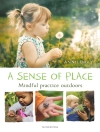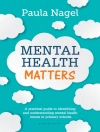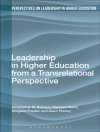‘This book reveals how powerful learning could be if students and educators shared more of the teaching responsibilities! Involving students in the teaching experience helps them learn more academically and do more socially.’
—Peggy King-Sears, Professor
George Mason University
‘In this easy-to-read resource, the authors help educators understand that inclusion isn′t something that we do to and for students, but rather, something we must do with students. The powerful anecdotes of educators and students planning, tutoring, and teaching side by side give us new hope and further direction for the creation of inclusive schools.’
—Cathy L. Taschner, Assistant Superintendent
Oxford Area School District, PA
Take advantage of a resource that′s right in your classroom—your students!
How can you meet the needs of a diverse student population in mixed-ability classrooms and maintain a cooperative, caring, and active learning environment? Students are the perfect resource!
Research shows that when students collaborate with teachers, they take responsibility for what happens in the classroom, care about their classmates, and become more engaged in learning. This comprehensive book offers practical strategies for empowering students as co-teachers, decision makers, and advocates in the classroom. Ideal for K–12 general and special education teachers, this guide describes how to
- Involve students in instruction through collaborative learning groups, co-teaching, and peer tutoring that foster self-discipline and responsible behavior
- Make students a part of decision making by utilizing personal learning plans, peer mediation, and other methods
- Put collaboration with students into practice using the assessment tools, user-friendly lesson plans, case studies, and checklists included
Collaborating With Students in Instruction and Decision Making is packed with all the information, strategies, and tools teachers need to tap their students′ potential as a resource for making a difference in the classroom.
Table of Content
Foreword: The Importance of Students′ Voices by Paula Kluth and Peyton Goddard
List of Tables
List of Figures
Acknowledgments
About the Authors
I. Introduction
Letter to the Reader
1. Why Collaborate with Students?
Rationale #1: Student Collaboration Facilitates 21st Century Goals of Education
Rationale#2: Student Collaboration is Democratic Schooling
Rationale #3: Student Collaboration Increases Self-Determination
Rationale #4: Student Collaboration Increases Academic and Social Competence
Rationale #5: Student Collaboration Facilitates Other School Reform Efforts
Rationale #6: Student Collaboration is an Untapped Resource in Times of Limited Fiscal and Human Resources
Summary
II. Teaching With Students
Definition of Teaching
What is the Instructional Cycle?
What is the Research Base for Teaching with Students?
2. Students as Co-Teachers in Cooperative Learning Groups
What is Cooperative Learning?
What Cooperative Groups Are NOT
Five Essential Ingredients of Cooperative Group Learning: PIGS Face
The Four Phases of Planning and Implementing Formal Cooperative Group Lessons
Teacher Decisions at Each Phase of Planning and Implementation
An Example of a Formal Cooperative Group Lesson
What Do Students Say About Cooperative Group Learning
Summary
3. Students as Peer Tutors and Partner Learners
Meet Some Peer Tutors
What is Peer Tutoring/Partner Learning?
Essential Ingredients of Peer Tutoring and Partner Learning
Getting Started with Peer Tutoring and Partner Learning
An Example of a Peer Tutoring/Partner Learning Lesson
Students′ Views of Peer Tutoring and Partner Learning
Summary
4. Students as Co-Teachers
What is a Co-Teacher? What are Examples of Adults Co-Teaching with Students?
Co-Teaching Approaches
Challenges Faced by Student Co-Teachers
What Are Student Co-Teachers, Adult Co-Teachers, Administrators, and Learners in Co-Taught Classes Saying About Co-Teaching?
Summary
III. Decision-Making With Students
5. Empowering Students as Collaborative Creative Thinkers
Barriers to Creative Thinking and Action
Awareness Plans for Busting Barriers and Imagining Improvements
Osborn-Parnes Creative Problem-Solving (CPS) Process
Thinking for Collaborative Solution Finding—Focusing Upon What You Can Do
Summary
6. Students as Instructional Decision Makers
Collaborating with Students to Determine the Product of Learning
Collaborating with Students to Differentiate Instruction for Struggling Learners
Summary
7. Students as Designers of Their Own Learning
Defining and Nurturing Self-Determination
Making Action Plans (MAPs) as a Tool to Actualize Self-Determination
Student-Led Individualized Education Programs
Personal Learning Plans as a Tool to Teach Self-Determination
What Do Students Say About Self-Determination?
Summary
8. Students as Mediators of Conflict and Controversy
Examples of Everyday School Conflicts
Understanding Conflict
An Example of a Class-Wide or School-Wide Peer Mediation Program
A Lesson Plan Example: Learning Friendly Disagreeing Skills
Summary
9. Students as Collaborators in Responsibility
A ‘Circle of Courage’ Definition of Responsibility
The Self-Discipline Pyramid
Summary
Epilogue: Beyond Benevolence to Befriending
Glossary
Resources
A. Cooperative Group Learning Lesson Plan
B. Peer Tutor Lesson Plan
C. Co-Teaching Lesson Plan
D. Syllabus for High School Course for Teaching Students to Be Co-Teachers
E. Template for Product-Activity Matrix Integrating Bloom’s Taxonomy and Gardner’s Multiple Intelligence Theory
F. Template for Facts about the Learner, Classroom Demands, Mismatches, and Potential Solutions
G. Student Collaboration Quiz (for students)
References
Index
About the author
Ann I. Nevin is professor emerita at Arizona State University and visiting professor at Florida International University. The author of books, research articles, and numerous chapters, Nevin is recognized for her scholarship and dedication to providing meaningful, practice-oriented, research-based strategies for teachers to integrate students with special learning needs. Since the 1970s, she has co-developed various innovative teacher education programs that affect an array of personnel, including the Vermont Consulting Teacher Program, Collaborative Consultation Project Re-Tool sponsored by the Council for Exceptional Children, the Arizona State University program for special educators to infuse self-determination skills throughout the curriculum, and the Urban SEALS (Special Education Academic Leaders) doctoral program at Florida International University. Her advocacy, research, and teaching spans more than 38 years of working with a diverse array of people to help students with disabilities succeed in normalized school environments. Nevin is known for action-oriented presentations, workshops, and classes that are designed to meet the individual needs of participants by encouraging introspection and personal discovery for optimal learning.












